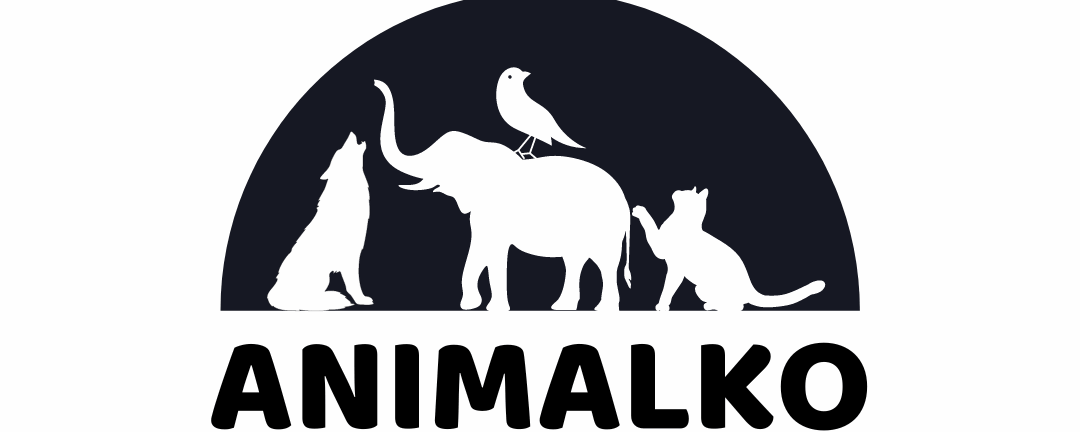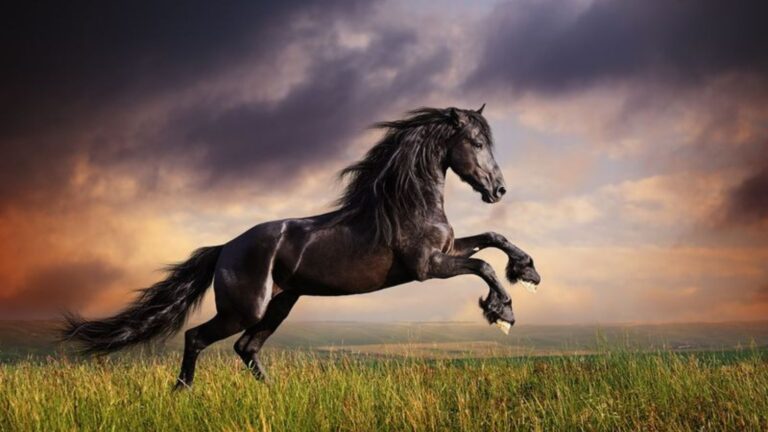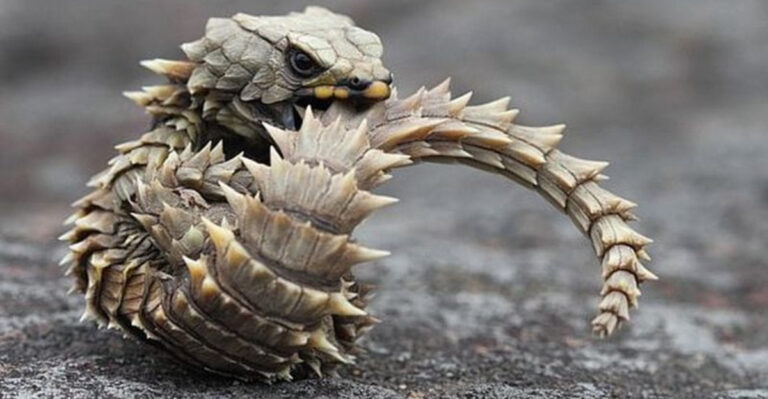13 Fluffy-Tailed Animals You’ll Fall In Love With

There’s something undeniably charming about animals with bushy tails.
Whether it’s the way a squirrel uses its tail for balance as it scurries across a branch, or how a fox wraps its fluffy tail around itself for warmth on a cold night, these appendages are more than just for show—they’re nature’s multi-tools.
1. Cacomistle

The cacomistle, also known as the ringtail, is a nocturnal mammal native to North and Central America. Its bushy tail is a standout feature, serving several important purposes.
One of its primary roles is balance. As adept climbers, cacomistles rely on their tails to navigate through the trees with ease and precision, which is essential for hunting and evading predators.
Communication is another crucial function of the cacomistle’s tail. They use tail movements to convey messages to other cacomistles, especially during mating season or when establishing territories.
2. Arctic Fox

The Arctic fox is a small, resilient creature known for surviving in some of the harshest climates on Earth. One of its distinctive features is its bushy tail, which plays a vital role in its survival.
The tail serves as an essential tool for warmth, wrapping around the fox’s body to conserve heat during freezing temperatures.
This adaptation is crucial for enduring the icy habitats they call home. Besides providing warmth, the Arctic fox’s tail aids in balance. As these foxes move across slippery, icy surfaces, their tails help them maintain stability, preventing slips and falls.
3. Fennec Fox

The fennec fox, with its distinctive large ears and bushy tail, is a fascinating creature adapted to life in the harsh Sahara Desert. Its tail serves multiple purposes essential for survival in such an extreme environment. One of the primary functions is thermoregulation.
The bushy tail provides shade for the fox’s body, helping to manage its temperature under the scorching sun. Additionally, the tail plays a crucial role in communication among fennec foxes.
They use their tails to express emotions and intentions to other foxes, especially during social interactions. A wagging or raised tail can convey excitement or alertness, enhancing their social bonds and interactions.
4. Ring-tailed Lemur
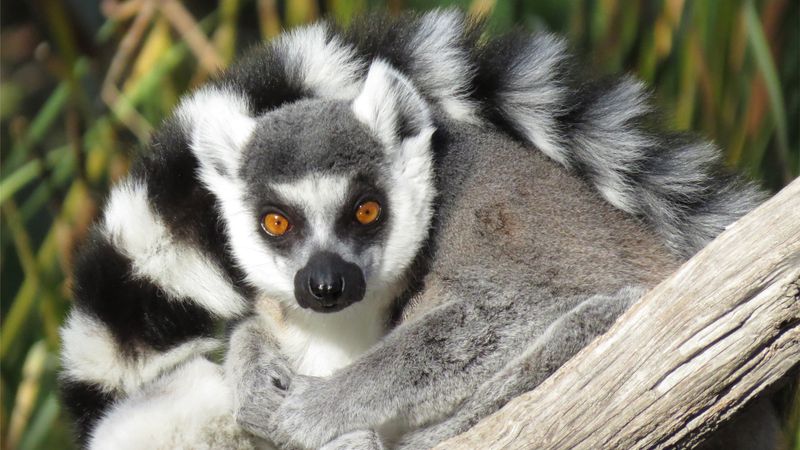
Ring-tailed lemurs are unique primates native to Madagascar, easily identified by their long, bushy tails with alternating black and white rings. These tails are not prehensile, but they play several critical roles in the lemurs’ lives. One of the primary functions is balance.
As lemurs leap from tree to tree, their tails help them maintain stability, ensuring safe landings and agile movements. Social communication is another key aspect of the ring-tailed lemur’s tail. In groups, lemurs often raise their tails high, signaling to each other as they travel through dense forests.
5. Chinchilla

Chinchillas are small, fluffy rodents known for their incredibly soft fur and bushy tails. Native to the Andes mountains, their tails serve multiple purposes vital for survival in their rocky habitats. One of the key functions of the chinchilla’s tail is balance.
As these agile creatures navigate the steep and uneven terrain, their tails help them maintain stability, crucial for safe movement and avoiding falls. In addition to balance, the tail plays a role in communication.
6. Bushy-tailed Woodrat

The bushy-tailed woodrat, also known as the packrat, is a small rodent found across North America. Its namesake tail is one of its most distinctive features, playing several important roles in its daily life.
The bushiness of the tail helps in balance, assisting the woodrat as it navigates its rocky habitats, often found in mountainous or canyon areas.
Besides aiding in balance, the tail is crucial for thermoregulation. In cooler climates, the woodrat’s bushy tail can wrap around its body, providing warmth and conserving body heat during chilly nights.
7. Long-tailed Titi Monkey

The Long-tailed Titi Monkey is a small primate with an irresistibly fluffy tail. Found in the lush forests of South America, this monkey’s tail is often longer than its body, which it uses for balance.
Their tails are not prehensile but serve as a charming feature that aids in their agility as they navigate dense foliage. Living in small family groups, titi monkeys communicate with an array of vocalizations, forming close-knit bonds.
8. Red Fox

The red fox is known for its striking appearance, particularly its bushy tail. These animals use their tails for several purposes. One of the primary uses is for balance while they manoeuvre through their forest habitats. When dashing through snow or jumping over obstacles, their tails help them stay steady.
Additionally, the red fox’s tail serves as a cozy blanket, keeping them warm during sleep. They wrap their tails around their bodies to shield against the cold, a crucial survival tactic during harsh winters.
9. Raccoon

Raccoons are known for their distinctive black masks and ringed tails. The bushy tail of a raccoon is not just for aesthetic appeal; it serves multiple purposes. One of its primary roles is to provide balance, crucial for these animals as they climb and explore trees or structures in search of food.
The tail’s length and bushiness help raccoons maintain stability during these activities. Additionally, the tail is a significant tool for communication among raccoons. They use tail positions and movements as signals to convey messages to other raccoons.
10. Ground Squirrel
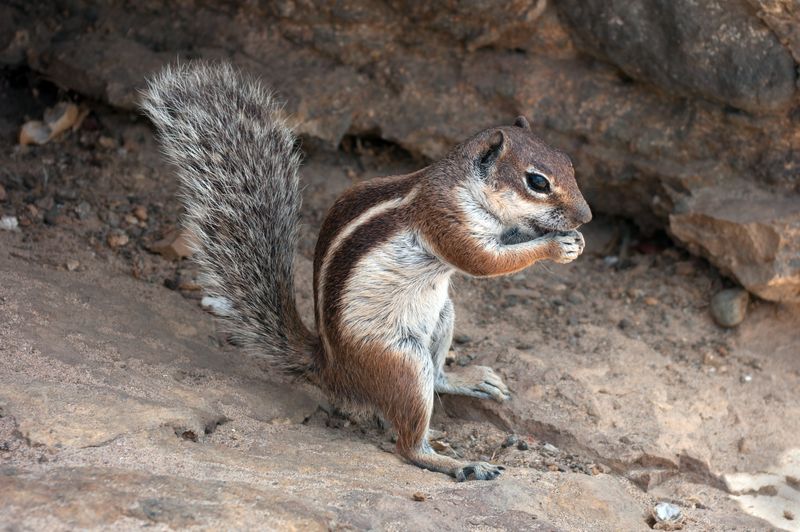
Ground squirrels are small, burrowing rodents that thrive in open grasslands and meadows. Their bushy tails are distinctive features that play several key roles in their survival.
Primarily, the tail helps with balance as ground squirrels scurry across uneven terrains and dive into their burrows.
This balance is essential for quick and agile movements, which are crucial for escaping predators. The tail is also a communication tool. Ground squirrels use tail signals to alert others of potential threats, waving or flicking their tails as a warning system.
11. Squirrel

Squirrels are small rodents, easily recognized by their large, bushy tails. These tails are more than just for show; they are essential tools for survival. One of the key functions is balance, helping squirrels navigate through the trees with agility.
As they leap from branch to branch, their tails act as counterweights, preventing falls and ensuring precision in their movements. Another fascinating aspect of the squirrel’s tail is its role in communication. Squirrels use tail movements to signal danger or express emotions to one another.
12. Golden Lion Tamarin

The golden lion tamarin is a small, vibrant primate native to the Atlantic coastal forests of Brazil. Its most striking feature is its bright golden fur, complemented by a long, bushy tail. This tail is not prehensile, but it plays a vital role in the tamarin’s life.
One of its primary functions is balance, aiding these agile animals as they navigate the dense forest canopy in search of fruits and insects. In addition to balance, the tail serves as a social tool. Golden lion tamarins use their tails in communication, conveying emotions and social cues to others.
13. Black-Tailed Prairie Dog

Discover the black-tailed prairie dog, a social and spirited creature displaying remarkable community behavior. These small mammals, often found in the grasslands of North America, are known for their lively nature and intricate communication skills.
With a distinctive black-tipped tail, they scurry about creating vast underground burrows. These burrows provide safety and social spaces for their colonies.
